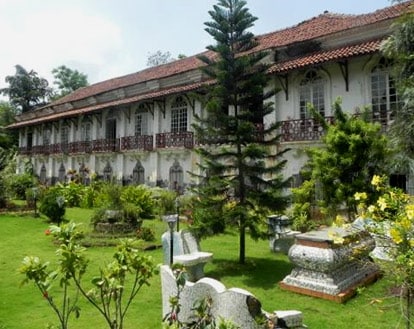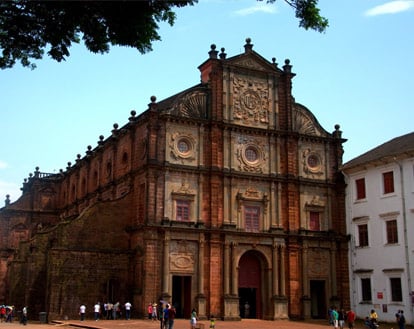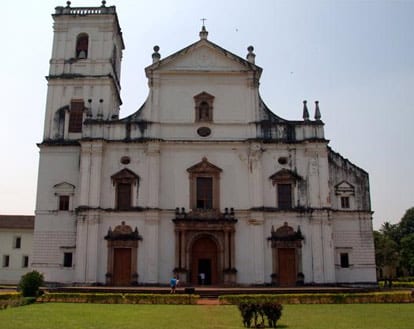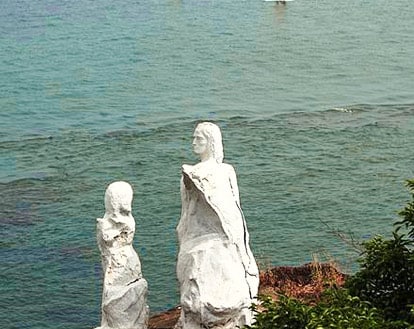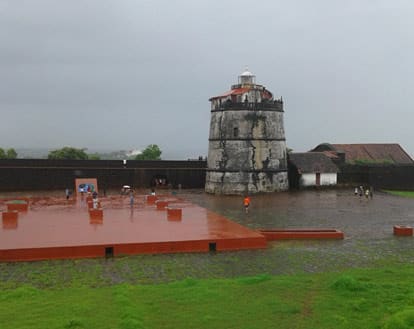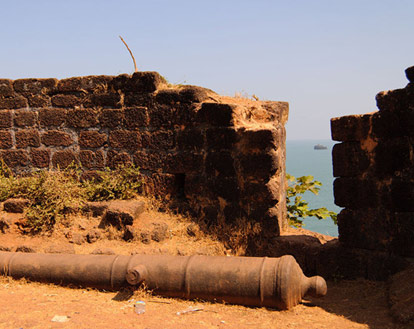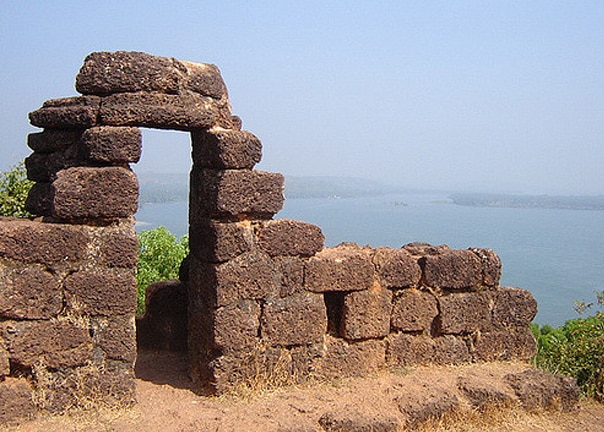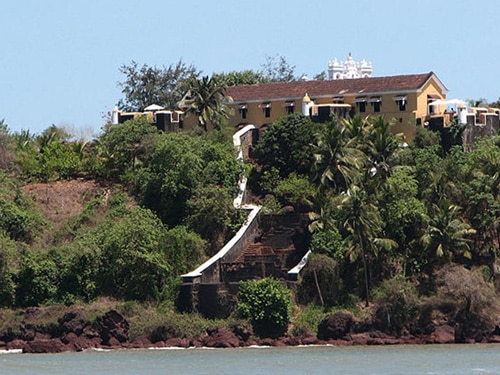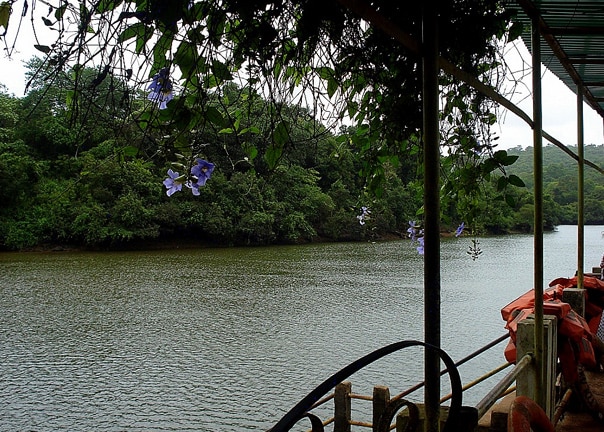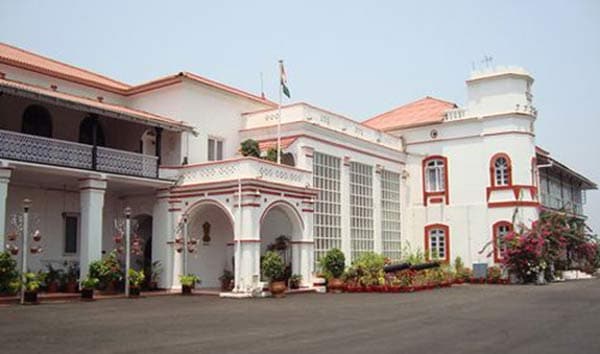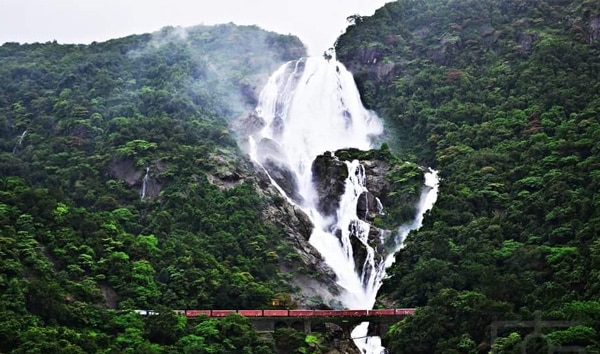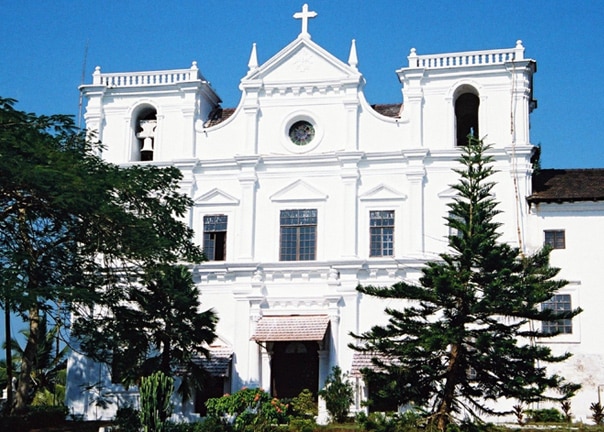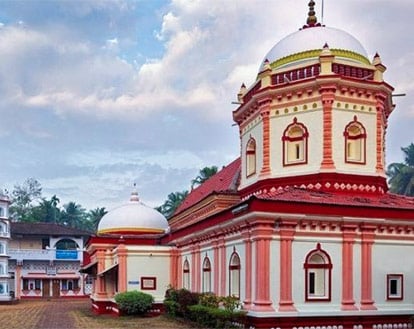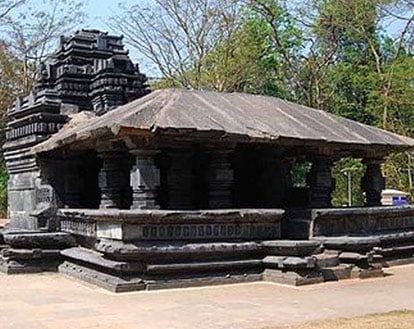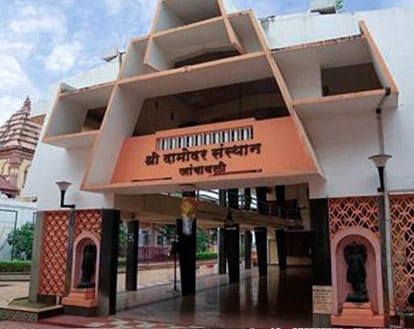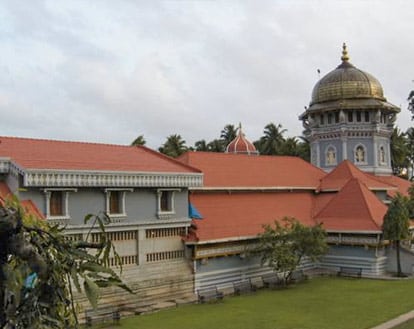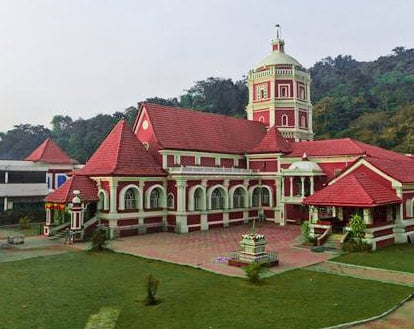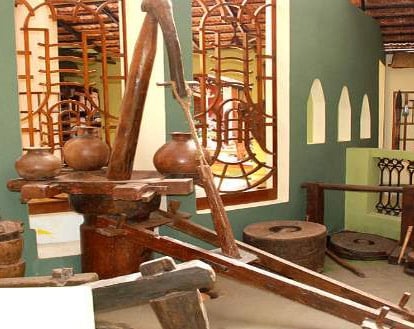
Ethnographic museum in Goa
Goa Chitra Museum
Goa Chitra is a history museum located in Benaulim, South Goa. The museum was founded by Victor Huge Gomez in the year 2010. It has a wonderful and huge private collection of over 4000 artifacts —focusing on Goa’s traditional agrarian technology and lifestyle. There are three sections of the museum namely the wheel and cart museum, the Goan history museum, and 3rd showcases the utensils and tools. A sugarcane grinder standing almost five meters high is one of the main focal points of the museum.
In a very short span of time, this museum has won great recognition. It has been rated by the Archaeological Survey of India as the “topmost contemporary museum” in India.
The museum is located 5.7 kms away from Beleza By The Beach Resort.
Visiting this museum is like a step back into time. Contact our help desk to findout more about visiting the museum and arranging a guided tour.
Tourist attractions near Beleza
Reach out to us at guestrelations@belezagoa.com to book excursions.
-
Goa Chitra Museum
The Goa Chitra Museum contains an organic farm for the cultivation of all staples along the Western Ghats of India. It is the first and only ethnographic museum in Goa featuring artifacts like local pottery, farming tools, musical instruments, ancient carts, and palanquins from various civilizations.
Location
The St. John Baptist Church Road
Mondo-Waddo, Benaulim
Salcete Goa – 403716 -
Menezes Braganza Pereira House
The Menezes Braganza Pereira house, built over 350 years ago, is the personification of the aristocratic life of the Braganza house in its heyday. It is the biggest and most exquisite heritage house, located near the church square in Chandor; its Portuguese-style façade lending it an alluring beauty. Visit this house to see a museum of chandeliers, paintings, porcelain, crystal, period furniture, and other antique items.
Location
Culsabhatt, Chandor
Goa – 403714Visiting Hours
Open every day between 9:00 am and 5:00 pm -
The Basilica Of Bom Jesus Church
The Basilica of Bom Jesus Church is one of the biggest attractions in Goa. The site preserves the remains of Goa’s patron saint, St. Francis Xavier. Tagged by UNESCO as a World Heritage Site, this church is located in Old Goa, previously the capital of Portuguese Goa. The church holds sacred significance as it is the first church in India to be assigned the status of Minor Basilica.
Location
9km away from Panaji, Old Goa, India -
Sé Cathedral Church
Sé Cathedral Church (Sé Cathedral of Santa Catarina) is one of the largest churches in Asia and has been declared a World Heritage Site by UNESCO. Dedicated to Catherine of Alexandria, the church was built to commemorate the victory of the Portuguese over a Muslim army. It is among the oldest buildings in the state depicting true Portuguese royalty in its architecture.
Location
10km away from Panaji, Old Goa, IndiaVisiting Hours
7:30 am to 6:30 pm, except during mass hours -
Dona Paula
This picturesque destination is named after Dona Paula de Menezes, daughter of the former Viceroy of Goa who plunged into the sea when she was refused permission to marry her lover – a local fisherman. It is one of Goa’s finest tourist destinations, surrounded by many luxury hotels and institutes in the suburbs of Panaji. This location, also known as lovers’ paradise, is popular for its superlative beaches, unique locales, and mysterious legends, and has served as an iconic spot in many Bollywood movies. Attractions at Dona Paula include its beach, Vasco da Gama Bay, the ‘Image of India’ statue, Cabo Raj Niwas, and the National Institute of Oceanography.
Location
7km from Panaji, Goa, India -
Church & Convent of St Francis of Assisi
Founded by Franciscan friars in 1517, the Church & Convent of St. Francis of Assisi is a unique masterpiece attached to Se Cathedral. The Se Cathedral and the Church are connected by the Archiepiscopal Palace, a residential palace of the Archbishops until 1695, after which they moved to Panjim. Much of it, except the black stone gateway, was demolished in 1661 and rebuilt. The church does not presently hold any religious gatherings.
Location
10km away from Panaji, Old Goa, India -
Fort Aguada
Fort Aguada is a well-preserved 17th-century Portuguese fort gets its name — meaning water — thanks to its freshwater springs that satiated the thirst of sailors who passed nearby. It was constructed by the Portuguese to ward off attacks by the Dutch and Marathas, and as a checkpoint for ships arriving from Europe. Smaller than other forts in India, it consists of a lighthouse and the Fort Aguada Beach Resort, a property of India Hotels.
Location
18km from Panjim, Bardez Taluka, North Goa, India -
Fort Cabo de Rama
Fort Cabo de Rama derives its name from Lord Rama. Legend says that he and his wife Sita took refuge at this fort when they were exiled for 14 years. This fort withstood gruesome battles between the Portuguese, Marathas, Muslim invaders, and Hindu kings, and was used as a prison by the British. There’s a church inside the fort that is still a place of prayer for devotees.
Location
Canacona Taluka, South Goa, India -
Fort Chapora
Built on an earlier structure constructed by Adil Shah, Fort Chapora was rebuilt by the Portuguese in 1617. The main intention behind its construction was to keep away the Hindu rulers that were eyeing this prime location near Anjuna beach.
Location
10km from Mapusa, near Anjuna Beach, Goa, India -
Fort Tiracol
Standing tall along the coast of the River Tiracol, this fort provides a scenic atmosphere and a beautiful view of the river, making it a major tourist attraction in Goa. It was originally constructed by the King of Sawantwadi in 1746, but was acquired by the Portuguese under the reign of Viceroy Dom Pedro De Almeida. This fort stands as a testimony to the revolt between Almeida and the Portuguese forces. Today, it houses a heritage hotel but tourists can visit it via a 30-minute ferry ride.
Location
Querim, 42km from Panjim, Goa, India -
Mayem Lake
Located in the Bicholim district of Goa, Mayem Lake is a beautiful freshwater lake where tourists can enjoy a romantic paddle boat ride. It is one of the more popular tourist destinations in Goa and boasts an extremely relaxing ambience surrounded by picturesque forests, lush landscapes, and a calm, sparkling lake. The Goa Tourism Development Corporation has also constructed a resort here for lodging purposes.
Location
Bicholim Taluka, North Goa, India -
Cabo Palace (Cabo Raj Niwas)
Cabo Palace, also known as Cabo Raj Niwas and Cabo Raj Bhawan, is situated opposite Fort Aguada on River Mandovi and currently houses the Governor of Goa. Formerly home to a Franciscan monastery and later the Viceroy during Portuguese rule, it was built in 1541 to guard the Mandovi and Zuari rivers. Today, the Cabo Raj Bhavan is used to carry out political duties like swearing ceremonies and other official occasions.
-
Dudhsagar Falls
Dudhsagar Falls are the fifth tallest waterfalls in India with a plummeting height of 1,017 feet and a width of 100 feet. These waterfalls are situated along the Goa-Karnataka border, high up on the Mandovi River’s watershed. They hold great importance for Goa’s ecosystem as they are surrounded by the mystifying Mollem National Park.
Location
60km from Margao, Mollem National Park
Eastern border of Goa-Karnataka -
The Rachol Seminary
The Rachol Seminary, also known as the Patriarchal Seminary of Rachol, was founded in 1560 from the remains of a Muslim fort. Fragments of St. Constantius’ remains are said to be enshrined here since 1782. The seminary has great religious significance as it is one of the pillar stones promoting Christianity in Goa.
Location
7:30 am to 6:30 pm
except during mass hours -
Church of Lady of the Rosary
The Church of Lady of the Rosary is located right opposite the Basilica of Bom Jesus Church. It was built between 1544-1549, and is one of the most visited places in Goa. It is one of the oldest surviving catholic churches in Goa — a standing testimony of the early Portuguese conquests. The church was the brainchild of Alfonso de Albuquerque, who wanted to construct a religious structure right where he had defeated the Sultan of Bijapur, Adil Shah, in 1510.
Location
Holy Hill, Old Goa, India -
Shri Naguesh Temple, Bandora
Dedicated to Lord Shiva, this temple was built in 1413 AD during the rule of the Vijaynagar empire and has great archaeological importance. It is one of the few temples in Goa that have withstood Portuguese conquests. The temple underwent major renovations during the rule of Shahu Maharaj. The main attractions at this temple are the Deepsthamb and the Kunda in which you can see the reflection of the Naguesh idol.
Location
Pharmagudi-Kavalem-Ponda road:
800m from Pharmagudi
26.2km from Panaji, Panaji-Belagavi Road, Goa, India -
Shri Mahadev Temple, Tambdi Surla
The Shri Mahadev Temple at Tambdu Surla was constructed in the 12th century as a dedication to Lord Shiva, by the Kadamba Yadava dynasty. It is the oldest temple in Goa, and contains intricate relief carvings on stone that occupy a very prominent archaeological position in Indian history. The deity is positioned so that it basks in the first rays of the rising sun. The Shri Mahadev Temple is managed by the Archaeological Survey of India (ASI), and should be on your list of attractions to visit if you have an affinity for ancient heritage.
Location
65km from Panaji
12km from Molem -
Shri Damodar Temple, Zambaulim
Shri Damodar Temple is situated on the banks of the Kushawati River in Zambaulim, about 22km from Margao. This temple dedicated to Lord Shiva serves as a place of worship for both Hindus and Christians.
Location
22km from Margao, Zambaulim, Goa, India -
Shri Mahalsa Temple, Mardol
Shri Mahalsa Temple in Mardol is dedicated to Mhalsa Devi, fondly known as Mhalsa Narayani, the Mohini avatar of Lord Vishnu. The 450-year old temple is famous for its huge brass bell and its Palkhi festival.
Location
Mardol, Ponda Taluka, Goa, India -
Shri Shantadurga Temple, Kavlem
More than 450 years old, the Shantadurga temple is situated in the foothills of Kavalem village. Goddess Durga was said to act as a mediator between Lord Shiva and Lord Vishnu’s fierce war, and was given the name Shanta, meaning ’peace’. The temple was originally situated in Keloshi, but relocated during Portuguese rule. The present temple structure was built between 1713 and 1738 under the reign of Shahu Maharaj.
Location
Mardol, Ponda Taluka, Goa, IndiaPhone Number
+91 832 2312557, +91 832 2319900



